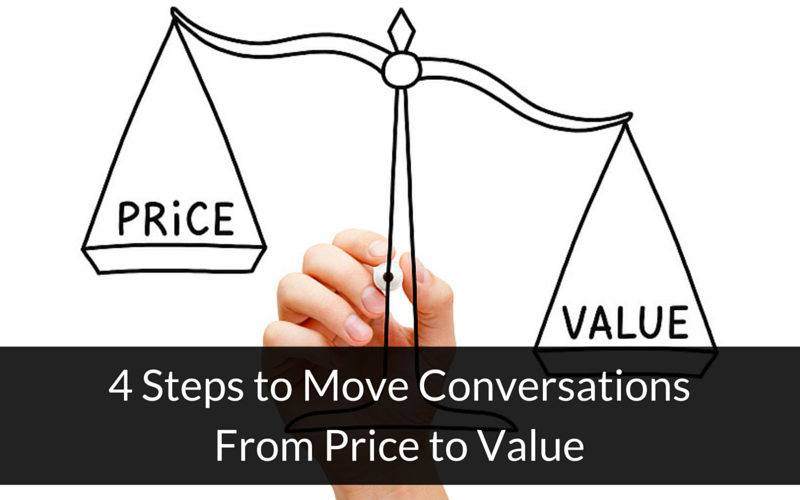
While it may seem like customers only focus on price, many of them actually place a higher importance on other attributes. By skillfully framing the conversation using your knowledge of those attributes, you can move their focus from price to value.
You begin by building rapport with the customer. During this time, you will want to ask questions about the business and focus the discussion on what problem the customer needs to solve. From the answers the customer provides, you will learn most of the attributes s/he responds to, providing you a pathway away from price.
1. Ask the Right Questions
Your customer will often open the conversation by asking for the price up front. Instead of responding directly, work around it. Educate the customer about the many choices that are available and that, to provide the right solution, you need to know more details about what the customer wants to accomplish. Your goal at this point is not to configure a solution but rather understand the customer’s problems so that you can establish your solution’s value.
Encourage the customer to talk about the company’s needs, wants, and frustrations with current business operations. Ask what the goals are for the future. These details can uncover the scope and size of the problem and the alternatives under consideration to resolve the problem.
Once you have redirected the conversation, you can begin to present your value proposition.
2. Counteract Resistance
If your customer proves resistant to your attempts to reframe the conversation, be persistent in stating that your pricing is irrelevant unless your solution can deliver real value to them.
Follow up with questions about what is being used now and where the customer would like to see improvement. This is where your familiarity with your value proposition comes into play. You can lead your customer down the path of discovery by making statements and asking questions around benefits experienced by similar customers.
Some examples include:
- It seems that you may have too many headcount in this area and could either reduce it or avoid hiring additional people. Some of our customers have been able to reduce their headcount needs by x% in this area.
- It seems that you have many legacy systems. Don’t they cost you a lot to maintain?
- Are you comfortable with your level of customer service and customer retention? We have seen customers that have been able to see x% improvement in retention rates by improving customer service.
All of these statements can uncover the information you need to begin quantifying your solution’s value.
3. Quantify Value to Showcase ROI
As you learn more about the customer’s needs, you can start building solutions and analyzing the return on investment of each. This is where a value calculator or ROI tool can come in handy.
This approach will support your earlier statements about pricing variations and why you needed to first learn about the problem before offering a solution. Also, you can create packages with a range of prices that will let the customer feel in control of spending.
Nothing will counter the price question as well as showing how little the price matters when you demonstrate how quickly that cost can be returned and exceeded.
4. Don’t Give Up
When you come up against the pricing question, it is incumbent upon you to find a way to share your knowledge of how to solve a real business problem and deliver real dollars and cents to their business. You must find a way to help the customer define what is truly important and guide the conversation towards value.
If customers understand the value they will receive, you will have won not just the sale, but likely you will receive future business because you have also won the customers’ trust.









